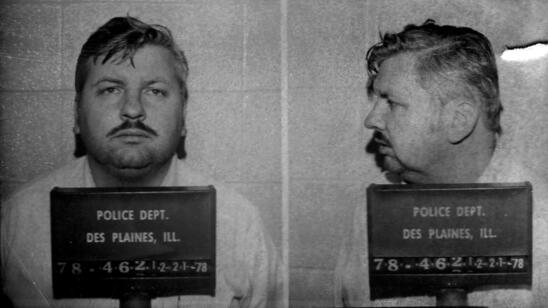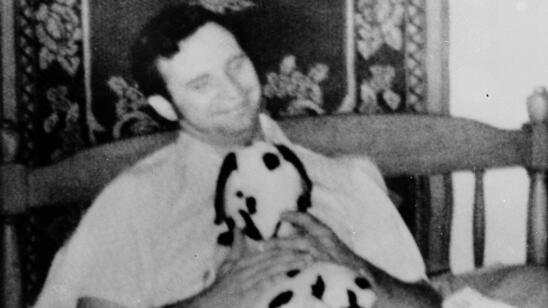On the morning of July 15, 1997, Italian fashion designer Gianni Versace had just stepped out to buy some magazines at a nearby newsstand and was re-entering his lavish Mediterranean-style palazzo in Miami’s South Beach. A man described by witnesses as white, in his 20s and wearing shorts, a tee shirt, and baseball cap ran up to the designer. Two shots rang out. Versace fell onto the front steps and then lay still.
Doctors told The New York Times that the 50-year-old had been shot twice in the back of the head. By the next day, the front steps were covered in bouquets of flowers, a tribute to the designer whose glitzy, sexy fashion line combined classical influences with pop-culture flair.
The suspect, Andrew P. Cunanan , 27, described by Vanity Fair as a “gay gigolo down-on-his-luck,” ran from the scene. His body was found nine days later in a houseboat that he had broken into a few miles away from the murder scene. Police said he shot himself in the mouth with a .40 caliber pistol.
The designer was not Cunanan’s first victim. A few months before, he had allegedly begun a series of killings that put him on the FBI’s 10 Most Wanted fugitives list. The FBI and other law-enforcement agencies wanted to question him about the killing of a former naval officer and friend of Cunanan’s who was bludgeoned to death in Minneapolis.
A few days later, an architect friend of Cunanan’s was shot and killed in the same state. The following month (May), he apparently targeted a 72-year-old real-estate developer in Chicago. He stole the man’s car and then, less than a week later murdered a New Jersey cemetery worker, whose red truck he drove to Miami. It was found abandoned in a parking garage near Versace’s residence. Police found no motive for Versace’s murder, though some who knew Cunanan speculated that it was a twisted desire for fame.
While Cunanan’s alleged murders have often been described in the press and by some criminologists as a “spree,” the FBI classifies him as a serial killer: “Andrew Cunanan murdered multiple individuals over a period of several months, separated by a ‘cooling off period,’ making him fit the definition of a serial murderer.”
Below, we break down the difference between these sometimes confusing terms.
Serial Killer
According to the Behavioral Analysis Unit (BAU) of the FBI, this is the unlawful killing of two or more victims by the same offender(s), in separate events.
Examples:
John Wayne Gacy was found guilty of killing 33 boys and young men, burying most of them beneath his Illinois home. He committed his first known killing in 1972. In 1978, police searched his home looking for a 15-year-old who had gone missing and found evidence of homicide. Gacy died by lethal injection in 1994.
Gary Ridgway, known as the Green River Killer, murdered at least 49 women in Washington state before being caught in 2001. He began his murders of young runaways and prostitutes in 1982; a DNA match in 2001 led to his capture. He was sentenced to life in prison in 2003.
Spree Killer
Spree murder is generally defined (according to the FBI BAU) as two or more murders committed by an offender or offenders, without almost no time break between murders, and possibly in multiple locations.
Examples:
Daniel Remeta, 27, was convicted of killing five people, starting with a convenience-store clerk, in a six-day tristate murder spree beginning in 1985. He was traveling around Kansas, Arkansas and Florida with his 18-year-old girlfriend and another young man when the murders occurred. Remeta was executed in 1998.
Elliot Rodger, 22, went on a killing spree in 2014 in the town of Isla Vista, near the University of California, Santa Barbara (UCSB) campus. He stabbed to death three men in his apartment, then drove to a sorority house and through town, shooting and killing three more. His rampage injured 14 more, as he shot some pedestrians and ran into others with his car. After he crashed into a parked car, police found him dead inside his vehicle, with a self-inflicted gunshot wound.
Mass Murderer
Mass murder, according to a 2013 federal statute, consists of three or more killings in a single incident.
Examples:
In July of 1966, Richard Speck, 24, forced his way into a group residence for nursing students on Chicago’s South Side. He tied up and brutalized eight women over the course of a day, finally strangling or stabbing them. A ninth nurse, 23-year-old Corazon Amurao lived to testify at his trial. He was found guilty of eight murders and sentenced to death. His death sentence was commuted in 1972 and he died in prison of a heart attack in 1991.
In a McDonald’s near San Diego, California, on July 18, 1984, James Oliver Huberty, 41, opened fire with several automatic weapons, killing 21 people and wounding 19 others. His wife reportedly said that he had left the house saying, “I’m going hunting…hunting for humans.” He is said to have walked calmly around the restaurant shooting the customers, including several who tried to escape. When police sharpshooters realized that Huberty was the sole killer, he was taken out with a shot to the chest.
(Image: Georges De Keerle/Getty Images)
Related Features:
‘The Assassination of Gianni Versace’: The True Story of His Tragic Death
Why Are Some Women Attracted to Serial Killers?
‘Good Luck Sleeping Tonight’: Serial Killers Plague Almost All Cities
Spotting Secret Death-Scene Clues: A Retired Coroner Tells All


